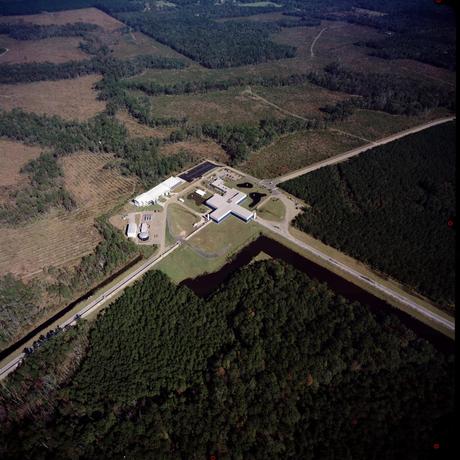In 2015, the iconic Laser Interferometer Gravitational-Wave Observatory (LIGO) made the first-ever tangible detection of gravitational waves. The waves were the result of two black holes colliding far out in the universe; Since then, a wealth of such signals have been observed from merging black holes, neutron stars, and even a few mixed mergers between the two.
But despite the success of LIGO - based at two US sites and supported by the Virgo detector, based in Italy, and Japan's Kamioka Gravitational Wave Detector (KAGRA) - astronomers have only been able to confirm one of these gravitational wave-producing events. using "traditional" light-based astronomy. That event was the merger of two neutron stars, which produced the gravitational wave signal GW170817.
Now, a team of scientists from the University of Minnesota has developed software upgrades that could help astronomers warn of merger events just 30 seconds after gravitational waves are picked up on Earth. This early warning system should allow more merger events to be monitored with light-based astronomy.
Related: Gravitational waves reveal the first merger of its kind between neutron star and mysterious object
"With this software we can detect the gravitational wave from collisions between neutron stars that are normally too faint to see unless we know exactly where to look," says Andrew Toivonen, team member and PhD candidate. student at the University of Minnesota's Twin Cities School of Physics and Astronomy, said in a statement. "Detecting the gravitational waves first will help pinpoint the collision and help astronomers and astrophysicists complete further research."
What are gravitational waves?
Gravitational waves are tiny ripples in the fabric of space and time, the two of which are united as a single, four-dimensional entity called "spacetime." Such ripples were first predicted by Albert Einstein in his 1915 theory of gravity, general relativity.
General relativity predicts that gravity arises from objects with mass that distort the fabric of spacetime. The greater the mass, the more extreme the curve, which explains why stars have a greater gravitational influence than planets.
Einstein also theorized that when objects accelerate, they ripple spacetime. These ripples are only noticeable when really massive objects are accelerating - objects like neutron stars and black holes that swirl around each other in binary systems, emitting gravitational waves. This continued emission of gravitational waves, Einstein said, would strip away angular momentum and cause the ultra-dense objects to contract and eventually merge, a collision that emits a high-pitched "scream" of gravitational waves.
However, Einstein thought that even gravitational waves from objects large enough to generate them would be too weak to ever be detected here on Earth.
Luckily he was wrong.
Yet detecting gravitational waves is still no easy feat. After all, neutron stars and black hole binaries are millions (sometimes even billions) of light years away, and gravitational waves lose energy as they travel through the cosmos.
To ensure that LIGO can detect the gravitational waves from these events, this enormous laser interferometer consists of two L-shaped arms, each 4 kilometers long. When they are in phase, laser light shines along each of these arms. This means that when the beams meet, the peaks and troughs of their waves align and the laser light is amplified, which is called 'constructive interference'.
However, if a gravitational wave passes over one of these lasers and space is compressed and stretched, then the laser passing over this portion of space is thrown out of phase, meaning that troughs and peaks meet, and vice versa, resulting in " destructive interference". and therefore no reinforcement.
The changes that LIGO picks up to 'hear' gravitational waves are 0.0001 times the width of a proton, particles found in the hearts of atomic nuclei. To put this in 'standard' astronomical terms, that is equivalent to measuring the distance to the nearest star, Proxima Centauri, about 4.2 light-years away, with a quantitative accuracy equal to the width of a human hair.

LIGO, Virgo and KAGRA are currently in their fourth operational run, which began on May 24, 2023 and will last until February 2025. Between each of the previous operational runs, scientists in the LIGO/Virgo/KAGRA collaboration have upgraded the software which is used to detect the shape of gravitational wave signals, track how the signal evolves, and then estimate the mass of the neutron stars or black holes that collided to create the signal. This software also sends a warning to other scientists.
Thanks to simulations created using data collected from observation periods one through three, and artificially generated gravitational wave signals, the team now knows that upgrades can be made to the observation software that would allow alerts to be issued within 30 seconds of detecting a gravitational wave during observation. . Such upgrades will impact observation period four.
That should help astronomers track the locations of these events in the sky with light-based astronomy, something no gravitational wave detector can currently do, and determine how collisions between the most exotic and mysterious objects in the cosmos evolve over time .
Related stories:
- Colliding black holes 'ring' through space-time with gravitational wave ripples
- Colliding black holes can hide in the light of super-bright quasars
- Two merging supermassive black holes observed at 'cosmic noon' in the early universe
This is unlikely to be the end of upgrades to gravitational wave detection warnings. At the end of this current operation, LIGO/Virgo/KAGRA collaboration scientists will use data collected in nearly two years of "listening" for a universal symphony of colliding black holes and neutron stars to improve the alert rate even further.
The team's research was published in the journal Proceedings of the National Academy of Sciences of the United States of America (PNAS).
